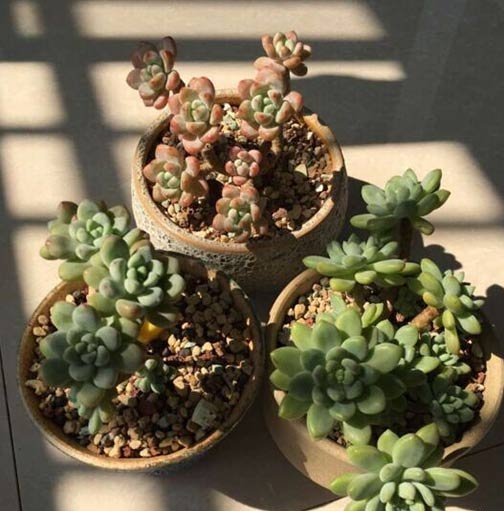Fresh-keeping treatment of Flowers
Flowers, especially fresh cut flowers, are often treated with flower preservatives after harvest in order to maintain the best quality, delay aging and resist changes in the external environment. Flower antistaling agents include general fresh-keeping solution, hydration solution, pulse solution, STS pulse solution, flower bud opening solution and vase retention solution, etc. Flower antistaling agents can be used in all aspects of harvest and treatment, from cultivation to wholesale, retail and consumption. After fresh-keeping treatment, many cut flowers can prolong their life by 2-3 times. Flower preservative can increase the size of flowers, maintain the color of leaves and petals, so as to improve the quality of flowers.
Most commercial antistaling agents contain carbohydrates, fungicides, ethylene inhibitors, growth regulators and mineral nutrients, and their effects are reviewed below.
Carbohydrate: the main source of nutrition and energy for cut flowers, which can maintain all the physiological and biochemical processes of cut flowers after leaving the mother. The external sugar source will participate in prolonging the vase life and play a role in maintaining the structure and function of mitochondria in cut flower cells. Promote water balance and increase water absorption by regulating transpiration and cell infiltration. Sucrose is one of the most widely used carbohydrates in antistaling agents, and fructose and glucose are sometimes used.
Different kinds of cut flowers or different varieties of the same species are suitable for different concentrations of sugar in antistaling agents. For example, in the bud opening solution, the optimum concentration of carnation is 10%, while the chrysanthemum leaves are sensitive to sugar, generally 2%, rose higher than 1.5% is easy to cause leaf burns. The optimum sugar concentration is also related to the treatment method and time. Generally speaking, for a specific cut flower, the longer the preservative treatment time is, the lower the sugar concentration is, so the sugar concentration in the pulse solution (treated for a short time after harvest) is high. the concentration of flower bud opening liquid is medium, while the sugar concentration of vase holding liquid is low.
Fungicides: microorganisms growing in vases include bacteria, yeasts and molds. When these microorganisms multiply in large numbers, they hinder flower stem ducts, affect the water absorption of cut flowers, and produce ethylene and other toxic substances to accelerate the senescence of cut flowers. In order to control the growth of microorganisms, fungicides can be added to antistaling agents or mixed with other ingredients.
Ethylene inhibitor: silver thiosulfate (STS) is the most widely used best ethylene inhibitor in the flower industry. It has good mobility in plants and can effectively inhibit ethylene synthesis in flowers. Effectively prolong the vase life of many kinds of flowers. STS needs to be equipped with it, and the solution should be used immediately. If it is not used immediately, it should be kept away from light. It can be stored in a dark environment of 20 ℃ and 30 min for 4 days.
Growth regulators: growth regulators are used in flower preservatives, including synthetic auxins and plant endogenous hormones. Plant growth regulators can be used alone or mixed with other ingredients. It can cause or inhibit various physiological and biochemical processes in plants, thus delaying the senescence process of cut flowers. Among them, cytokinin is the most commonly used, it can mainly inhibit the production of ethylene, can be sprayed or dipped in, the optimum concentration is 10--100ppm, dipped in for 2 minutes, if the time is too long, it will also produce adverse consequences, carnation has the best effect.
The above are the ingredients of flower preservatives, but in actual production, the main ingredients of flower preservation are sugar and fungicides, and sometimes two ingredients are added. Because some cut flowers secrete harmful substances from stem tips and submerged leaves. It can hurt themselves and other flowers in the same bottle, so the vase should be replaced with fresh fresh at regular intervals.
- Prev

More pictures to illustrate the difference between Raul, Gellian and Luo Qi.
Raul and Nelumbo nucifera, Luo Qi, some people say that these three are a kind of succulent plants, while others can solemnly tell the differences between them and make them refreshing. So what is the difference between Raul, Fat Lotus and Luo Qi?
- Next

Treatment of common diseases of flowers and plants
Treatment of common diseases of flowers and plants
Related
- What if the leaves of potted flowers turn yellow?
- Florescence Control of several Flowers
- Anti-freezing technology and post-freezing nursing technology of flowers
- What is the classification of flowers? What are the common methods of flower classification?
- Prevention and control of alkali and acid damage of flowers in courtyard
- Technology of Anti-freezing and restoring growth of Flower seedlings in greenhouse and greenhouse
- How does flower fertilization not hurt the root? Fertilization technology of flowers
- Key points of disinfection in flower greenhouse
- Several pesticides that are banned or used cautiously in flowers
- How to fertilize the flowers that watch the leaves?

